In order to generate a more inclusive dataset of Pseudomonas genes mapped to putative in-paralogs and putative orthologs in other Pseudomonas species/strains, we developed a Pseudomonas Orthologous Groups classification system.
To generate ortholog groups, pair-wise DIAMOND searches were run on all genomes in the database to find reciprocal best hits (RBHs) for each gene. These analyses often resulted in multiple candidate genes for RBH status, which were narrowed down by examining the similarity between the query's flanking genes and the hit's flanking genes. If two candidate genes were directly adjacent, they where both accepted as RBHs that involve putative in-parology.
Pairwise intra-genome DIAMOND searches were also performed to acquire in-paralog information (i.e. gene duplications occurring after species divergence). If two genes in one genome were reciprocally more similar to each other than to any gene in the other genomes, the two genes were designated putative in-paralogs. Ortholog groups are built by starting with a seed gene and then adding all genes to which there is a RBH or in-paralog relationship.
Every new gene added to an ortholog group was then treated as a seed gene and the addition process was repeated until all qualifying genes had been added. The result was the development of orthologous groups, specifically generated for Pseudomonas species genomes, which can be used to sort search results.
Pseudomonas Ortholog Group POG000080
| Strain | Locus Tag | Description | Same-Strain Members | Fragment ? | |
|---|---|---|---|---|---|
| Pseudomonas stutzeri NT0124 | TK79_RS10440 |
hypothetical protein
|
1 member |

|
|
| Pseudomonas stutzeri NT0128 | UF78_RS00460 |
hypothetical protein
|
1 member |
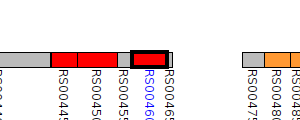
|
|
| Pseudomonas stutzeri RCH2 | Psest_4242 |
type VI secretion system FHA domain-containing protein
|
1 member |
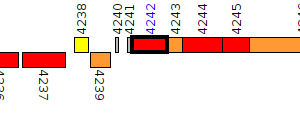
|
|
| Pseudomonas stutzeri SLG510A3-8 | AB691_RS00545 |
hypothetical protein
|
1 member |

|
|
| Pseudomonas stutzeri TS44 | YO5_19707 |
signal peptide protein
|
1 member |
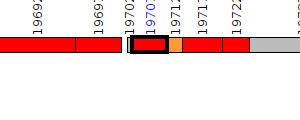
|
|
| Pseudomonas synxantha BG33R - Assembly GCF_000263715.2 | PseBG33_3131 |
type VI secretion protein
fha2 |
2 same-strain members: PseBG33_3131 PseBG33_5521 |
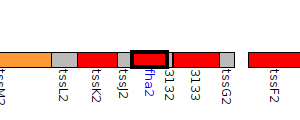
|
|
| Pseudomonas synxantha BG33R - Assembly GCF_000263715.2 | PseBG33_5521 |
type VI secretion protein
fha1 |
2 same-strain members: PseBG33_3131 PseBG33_5521 |

|
|
| Pseudomonas syringae CC1557 | N018_RS10735 |
hypothetical protein
|
1 member |

|
|
| Pseudomonas syringae pv. coryli NCPPB 4273 | P406_RS18085 |
hypothetical protein
|
1 member |

|
|
| Pseudomonas syringae pv. syringae B301D | PSYRB_RS12350 |
autotransporter
|
1 member |
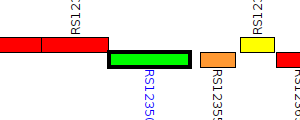
|
|
| Pseudomonas syringae pv. syringae B301D-R | PSSB301D_RS0125485 |
autotransporter
|
1 member |

|
|
| Pseudomonas taeanensis MS-3 - Assembly GCF_000498575.2 | TMS3_RS0117975 |
signal peptide protein
|
1 member |

|
|
| Pseudomonas taetrolens DSM 21104 | TU78_RS03250 |
hypothetical protein
|
1 member |
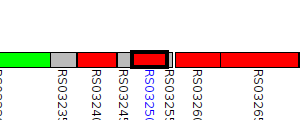
|
|
| Pseudomonas taiwanensis DSM 21245 | H620_RS0107060 |
hypothetical protein
|
1 member |
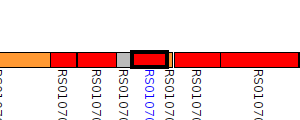
|
|
| Pseudomonas trivialis IHBB745 | AA957_RS15030 |
type VI secretion protein
|
2 same-strain members: AA957_RS15030 AA957_RS27365 |
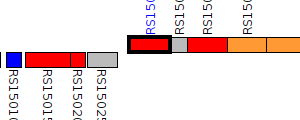
|
|
| Pseudomonas trivialis IHBB745 | AA957_RS27365 |
type VI secretion protein
|
2 same-strain members: AA957_RS15030 AA957_RS27365 |
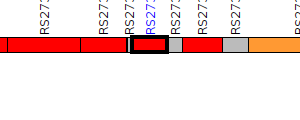
|
|
| Pseudomonas tuomuerensis JCM 14085 | PT85_RS12245 |
hypothetical protein
|
1 member |
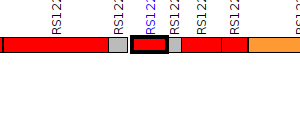
|
|
| Pseudomonas umsongensis 20MFCvi1.1 | D470_RS0113795 |
type VI secretion protein
|
2 same-strain members: D470_RS0113795 D470_RS0113930 |
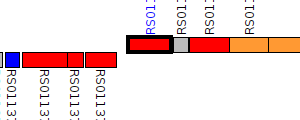
|
|
| Pseudomonas umsongensis 20MFCvi1.1 | D470_RS0113930 |
signal peptide protein
|
2 same-strain members: D470_RS0113795 D470_RS0113930 |
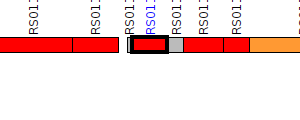
|
|
| Pseudomonas umsongensis UNC430CL58Col | N519_RS0105150 |
signal peptide protein
|
2 same-strain members: N519_RS0105150 N519_RS0105305 |

|